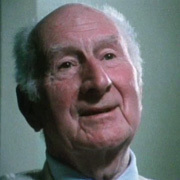
Ted (Edwin) Coubray
Edwin Coubray was born at Eastern Bush, Southland, on 19 October 1900, the third of four sons of Nicholas Coubray and his wife, Minnie Flowers. His father was a railway labourer and the family moved often. Edwin, known as Ted, was a six-year-old schoolboy at Orepuki, near Riverton, when he saw his first picture show; this was the beginning of a lifelong fascination with cinema.
The Coubrays moved to Palmerston North when Ted was in his early teens. In 1914 he began working as a trainee mechanic at George Skinner’s motorcycle and bicycle shop. At the end of World War l his older brothers, Nicholas and Arthur, bought a bakery in nearby Rongotea and Ted helped with bread deliveries.
In the early 1920s he got a job at the local Kosy Picture Theatre and learnt about motion picture projection. He opened his own picture show at the Rongotea town hall and distributed ‘dodgers’ advertising the screenings on his bread-delivery rounds. With Arthur he operated a country circuit, travelling in a truck he had adapted to generate electricity and showing pictures in halls from Hunterville to Levin.
Coubray’s first effort at professional film-making was a 10-minute movie prologue, The Motor Bandits (1920), produced by a small syndicate. After a successful screening to prospective shareholders, New Zealand Cinema Enterprises was registered, £10,000 capital was raised and a ‘great and glorious story’, The Birth of New Zealand, was filmed. Coubray was assistant cameraman (working under Frank Stewart), occasional extra, and stills photographer. Released in 1922, the movie was admired for its historical accuracy and educational value and was popular as a matinée programme.
After filming The Birth of New Zealand, Coubray returned briefly to running the family picture show circuit before leaving for Wellington to take up a position as projectionist at the Paramount Theatre. After a few years he left to work for Stewart at New Zealand Films, where he learnt his craft shooting material such as censor’s titles.
By 1924 Ted Coubray had moved to Auckland, where he married Ellen Frances (Nellie) Lindvall on 25 November 1925. She was the daughter of Gustaf Lindvall, scenic artist and set builder; they had met during Birth of New Zealand. In 1925 Coubray shot the British-produced Under the Southern Cross (1927), described since as ‘an ode to the pastoral splendour of the New Country’.
After establishing New Zealand Radio Films in 1926, Coubray made an inventive series of short, sponsored industrial documentaries and produced newsreels of local events. Nellie assisted by painting glass advertising slides for cinema screenings. Ted often accompanied the immigration inspector travelling by launch to meet incoming ships and was able to film famous stars such as Ignacy Paderewski and Anna Pavlova for newsreel items.
In 1927 Coubray formed Moa Films, for which he wrote, produced and directed horse-racing feature Carbine’s Heritage. Screening at three Queen Street cinemas in Auckland, the film attracted capacity audiences. The single copy was transported between the theatres and session times were staggered to meet the demand.
Coubray began developing his own sound-on-film system following the arrival of ‘talkies’ in New Zealand in early 1929. After six months’ experimentation, and with a minimum of technical knowledge, the Coubray-Tone sound system was operational. Entirely New Zealand-made, it was the first of its kind in Australasia. Experiments continued while he was working on Hei Tiki (1935). The making of the film is chronicled in this 1985 documentary. The experiments were cut short when its unscrupulous American director, Alexander Markey, fired him and commandeered the equipment.
This incident forced New Zealand Radio Films out of existence and Coubray took up a position as a street photographer. In 1938 he briefly took up filmmaking again, working as associate cameraman for Rudall Hayward on Rewi’s Last Stand (1940). He returned to film projection during the Second World War, mostly in the Hutt Valley’s King George and De Luxe theatres. Nellie died in 1958, and Ted married Lydia Louise Coubray (née Glen), widow of his younger brother, Fred, at Auckland on 13 March 1959. The following year he became manager–operator for Auckland Cinemas. When the company’s Tudor Cinema in Remuera closed in 1973, Ted and Lydia retired to Australia.
Throughout his life Ted Coubray was always interested in mechanics, and never ceased inventing. His numerous patents include an early camera-stabilising tripod, a speed-weighing machine, and various three-dimensional and colour systems. He died, aged 97, at Homebush, Sydney, on 10 December 1997; Lydia had died in 1994. There were no children from either marriage.
The following year the New Zealand Film Festival included a special programme on Coubray, screening footage of films he had worked on and Mouth Wide Open (1998), a documentary about his life, directed by Jonathan Dennis.
Profile originally written by Diane Pivac for the Dictionary of New Zealand Biography, and found on Te Ara - The Encyclopedia of New Zealand
Sources include
Diane Pivac, ‘The Rise of Fiction: Between the Wars’ chapter, in New Zealand Film - An Illustrated History Editor Diane Pivac with Frank Stark and Lawrence McDonald (Wellington: Te Papa Press, 2011)
Diane Pivac, 'Ted Coubray, 1900 - 1997' - 1998 New Zealand Film Festival Souvenir Programme, page 15
Ted Coubray collection, Ngā Taonga Sound & Vision
Unknown writer, Obituary for Ted Coubray - The Evening Post, 18 December 1997, page 7